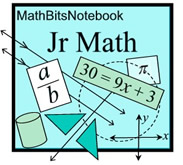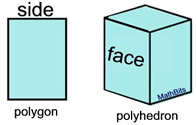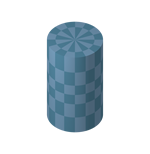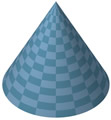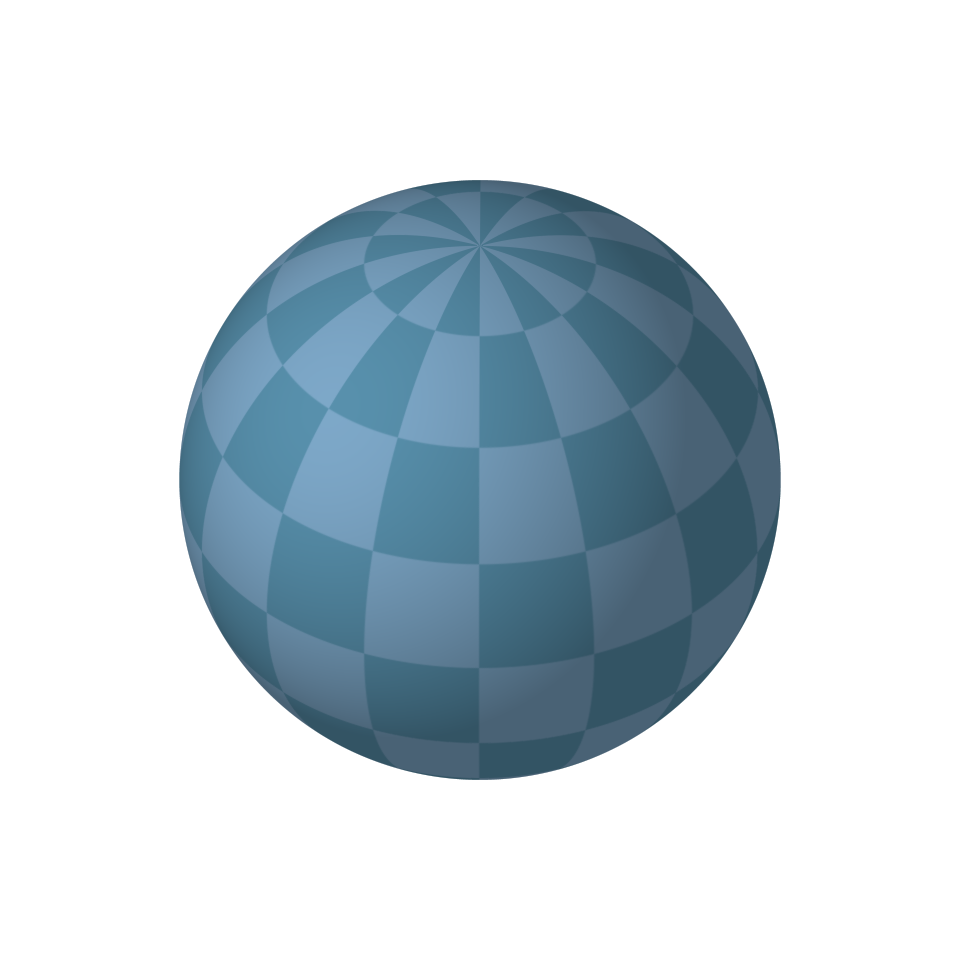Note: The study of three-dimensional (3D) space is called Solid Geometry.
The word "polygon" is a universal designation for 2-dimensional figures with line segments as their sides (such as triangles, rectangles, pentagons, etc.). In a similar manner, the word "polyhedron" is a universal designation for 3-dimensional figures with faces composed of polygons (where the faces will be primarily 2-dimensional triangles and quadrilaterals, at this level).
NOTE: When working with 3D solids, the word "side" refers to the line segments creating a polygon,
and "face" refers to the 2D polygons used to enclose the solid. |
|
A geometric solid (a 3-dimensional figure) is a portion of space which is completely enclosed, or separated from the rest of space, by some type of surface. The three-dimensional figures with polygon faces are categorized as polyhedra.
|
A polyhedron (plural polyhedra) is a three-dimensional solid with flat polygon faces joined at their edges. |
The word polyhedron is derived from the Greek poly meaning "many",
and the Indo-European hedron meaning "seat or face".
|
|
 A polyhedron has no curved surfaces.
A polyhedron has no curved surfaces.
The "faces" are flat, plane surfaces.
At this level, we will be working primarily with polyhedra
that are referred to as prisms and pyramids.
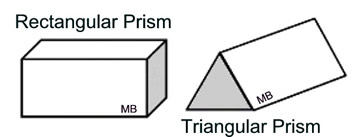

In addition, the solids that we will be discussing are described as "right" prisms or "right" pyramids.
For a right prism, this means that the solid will appear to be upright (not slanted or looking like it may tip over) when sitting on its base.
For a right pyramid, this means that the point (top vertex) will be over the center of the base (not leaning to the side).
|
 
Right Oblique
Prism Prism
|
We will see more types of polyhedra
in the section on Polygons. |
In the polyhedra shown above, the faces of the solids
are not all of the same shape
or size within one solid.
If all of the faces of one solid are the same shape and size,
the figure is called a regular polyhedron.
Remember, under polygons (2-dimensional figures), we saw regular polygons as figures
with
all of their sides of the same length and all of their angles of the same size (such as squares and equilateral triangles).
The regular polyhedra that we will be seeing are a triangular pyramid whose faces are all equilateral triangles, and a cube (a square prism) whose faces are all squares.
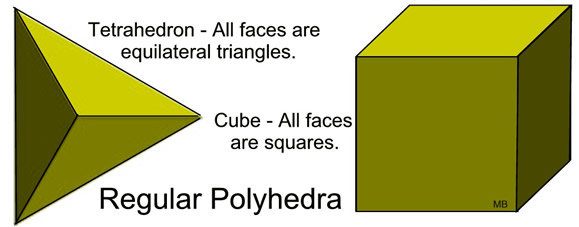
There are a total of five such regular polyhedra called the Platonic Solids,
after the ancient Greek philosopher Plato, in whose writings they first appeared.
The Platonic Solids
Tetrahedron |
Octahedron |
Icosahedron |
Hexahedron |
Dodecahedron |
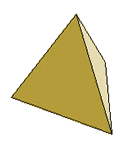 4 equilateral triangle faces
4 equilateral triangle faces |
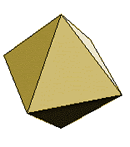
8 equilateral triangle faces
|
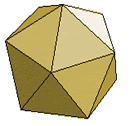
20 equilateral
triangle faces |
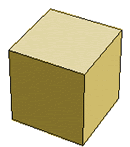 6 square faces
6 square faces |
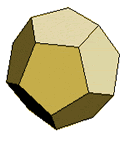 12 pentagon faces
12 pentagon faces |
The hexahedron is also called a cube.
While there is no limit to the number of regular two-dimensional polygons,
there is a limit to the number of regular polyhedra! There are only five!

In grade 8, we will be dealing with 3-D shapes that are NOT polyhedra:
These solids are not polyhedra since a part, or all, of the figure is curved.
